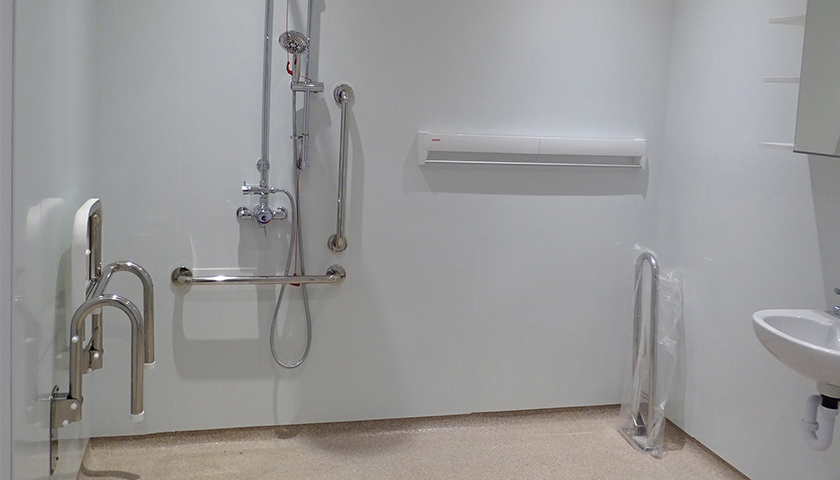A wetroom is effectively a fully waterproofed bathroom, where walls and floors are ‘tanked’ or sealed with layers of water resistant material, which stops damp from seeping out into the fabric of the building. Their advantages though, are many, perhaps the main one being that – freed of baths, trays, screens or other enclosures – they can make a striking addition that increases the value of your home. Wetrooms are, in general, easier to clean, as there’s no shower screen or tray to worry about and if you go for a wall-hung sink and toilet, the floor can be kept completely clear. In addition they should prove more hygienic as the opportunities for mould growth are much restricted compared to a standard bathroom layout. Although not always designed with this in mind, wetrooms are particularly good for the elderly or less able bodied. With no shower step to negotiate, adding half height screens can allow a carer to remain dry whilst assisting someone in the showering area. Unquestionably, wetrooms allow greater flexibility for future adaptation: ready for any decline in the mobility for the end user.
A further argument in their favour is that for those considering spending out on a new shower enclosure, a wetroom without one can work out at a very similar price, while looking a lot more modern and stylish. A couple of caveats, though, need to be heeded if your wetroom is going to be a success: It is absolutely vital that the installation is professionally waterproofed, then tiled or lined from floor to ceiling – which costs more than simply tiling above a bath.
In some respects wetrooms can be viewed as a blank canvas – free from most of the normal obstructions – which can then permit greater design freedom in respect of the finishes. Tiles are the most popular wall and floor covering, but it is circumspect to choose non-porous options such as ceramic or porcelain. Porous materials (including slate, marble and limestone) unfortunately require sealing every few months to prevent water damage. Meanwhile, floor tiles should be non-slip for obvious safety reasons and many people will want the additional comfort of underfloor heating. This will not only keep the surface warm underfoot, but help the water evaporate. Sheet vinyl or even composite materials, which are seamless and non-porous for low-maintenance, are other options for both walls and floors as are the many attractive panel alternatives available. Often manufactured in the form of high pressure laminates, these are large format which can feature special interlocks or the use of joint profiles, to avoid the need for grout and thus the almost inevitable future chore of scrubbing or bleaching to get rid of stains and mould.
The long term durability and success of any wall or floorcovering is, however, very much dependant on the stability of the substrate. Ideally the background for any finishes should be sound, completely water resistant and, if possible, provide a degree of thermal insulation. Whether the structure of the building is traditional masonry, timber frame or some other hybrid, a wetroom will benefit from the installation of a well proven tile-backer board to present a uniform background which also offers excellent bonding characteristics for tile cement or other adhesives. Those with a core of extruded polystyrene (XPS) and a facing of reinforced polymer concrete meet all of these aspirations and can also support substantial loads including wheelchairs, when laid across joists or other sub-floors.
In all situations, adequate provision must be made to remove water from the room, which requires both a drain outlet and direction for the run-off. For a workable wetroom therefore, probably the best way of achieving this is to make use of a pre-sloped tileable shower base.
The most user-friendly option is to purchase one which offers the same positive physical characteristics as the best tile-backer boards, but incorporates an adequately sloping surface and an integral drain that is adjustable for direction of outflow and it is essential that the waterproofing membrane laid beneath the tiling can be permanently sealed to this drain.
Given that these multiple criteria are met, then with their ease of maintenance and the sense of luxury, a contemporary wetroom is considered super-stylish by both design professionals and property pundits, meaning that – properly executed – they can add to both the enjoyment and the value of a home.


